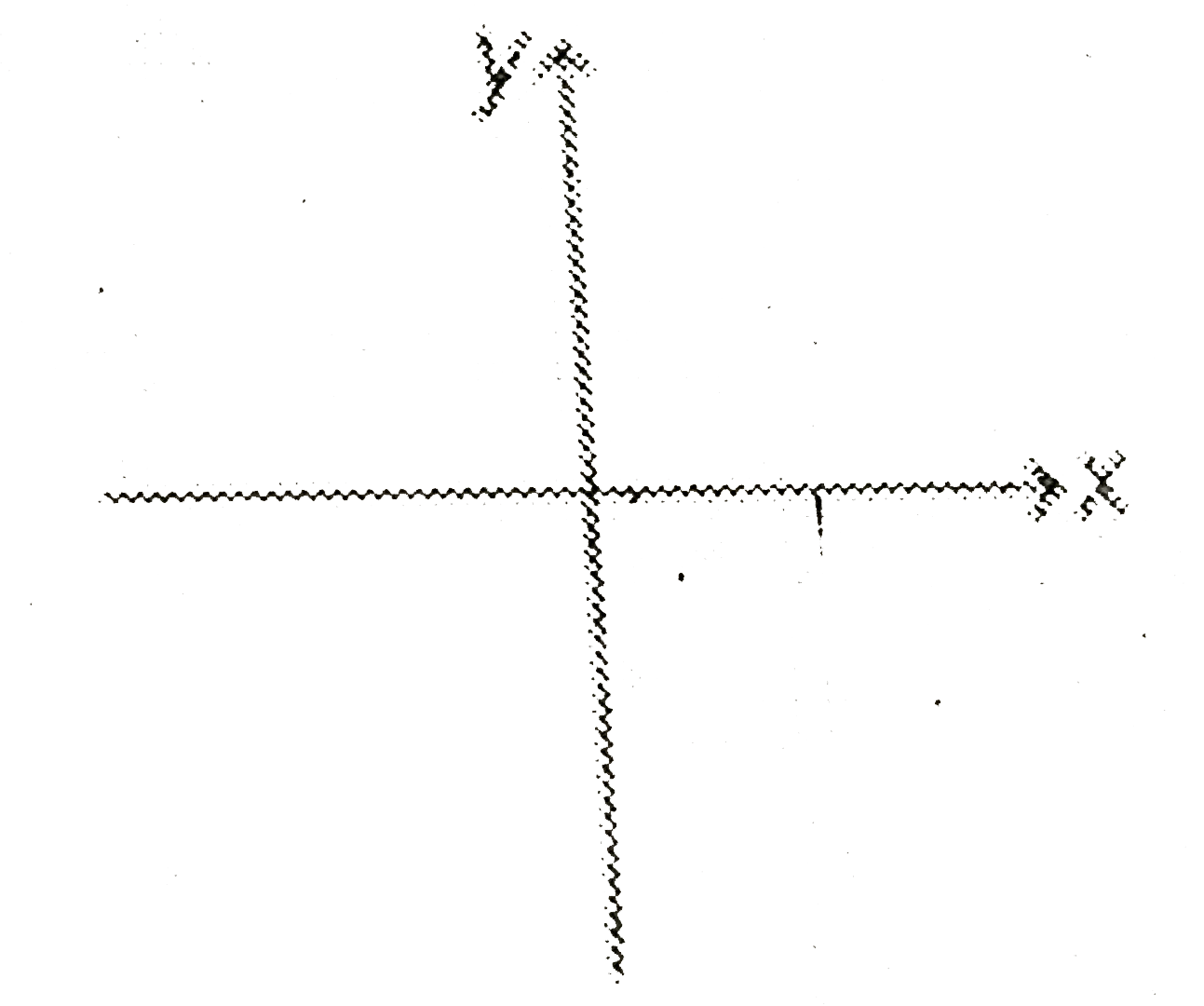The co-ordinate of the particle in x-y plane are given as x=2+2t+4t2 and y=4t+8t2 :-
The motion of the particle is :-
along a straight line
uniformly accelerated
along a parabolic path
non-uniformly accelerated
The correct Answer is:A, B
To analyze the motion of the particle given the coordinates x=2+2t+4t2 and y=4t+8t2, we will follow these steps:
Step 1: Differentiate the x-coordinate with respect to time
The x-coordinate is given by:
x=2+2t+4t2
To find the velocity in the x-direction, we differentiate x with respect to t:
dxdt=ddt(2+2t+4t2)=0+2+8t=2+8t
Step 2: Differentiate the y-coordinate with respect to time
The y-coordinate is given by:
y=4t+8t2
To find the velocity in the y-direction, we differentiate y with respect to t:
dydt=ddt(4t+8t2)=4+16t
Step 3: Differentiate the velocities to find acceleration
Now, we differentiate the velocity in the x-direction to find the acceleration:
d2xdt2=ddt(2+8t)=0+8=8m/s2
Next, we differentiate the velocity in the y-direction to find the acceleration:
d2ydt2=ddt(4+16t)=0+16=16m/s2
Step 4: Analyze the motion
Since both the x-acceleration and y-acceleration are constant (independent of time), we conclude that the motion of the particle is uniformly accelerated.
Conclusion
The correct option regarding the motion of the particle is:
Uniformly accelerated motion.
---
The x-coordinate is given by:
x=2+2t+4t2
To find the velocity in the x-direction, we differentiate x with respect to t:
dxdt=ddt(2+2t+4t2)=0+2+8t=2+8t
The y-coordinate is given by:
y=4t+8t2
To find the velocity in the y-direction, we differentiate y with respect to t:
dydt=ddt(4t+8t2)=4+16t
Now, we differentiate the velocity in the x-direction to find the acceleration:
d2xdt2=ddt(2+8t)=0+8=8m/s2
d2ydt2=ddt(4+16t)=0+16=16m/s2
Since both the x-acceleration and y-acceleration are constant (independent of time), we conclude that the motion of the particle is uniformly accelerated.
The correct option regarding the motion of the particle is:
Uniformly accelerated motion.
Topper's Solved these Questions
- KINEMATICS 1BOOK - DC PANDEY ENGLISHCHAPTER - KINEMATICS 1EXERCISE - COMPREHENSION_TYPE
19 Videos
- KINEMATICS 1BOOK - DC PANDEY ENGLISHCHAPTER - KINEMATICS 1EXERCISE - MATCH THE COLUMN
10 Videos
- KINEMATICS 1BOOK - DC PANDEY ENGLISHCHAPTER - KINEMATICS 1EXERCISE - INTEGER_TYPE
15 Videos
- KINEMATICSBOOK - DC PANDEY ENGLISHCHAPTER - KINEMATICSEXERCISE - INTEGER_TYPE
10 Videos
- LAWS OF MOTIONBOOK - DC PANDEY ENGLISHCHAPTER - LAWS OF MOTIONEXERCISE - Medical entrances gallery
39 Videos
Similar Questions
Knowledge Check
The co-ordintes of a mving particle at any time t are given by
x=ct2andy=bt2
The Speedof the particle is given byAt(c+b)B2t√(c2−b2)Ct√(c2+b2)D2t√(c2+b2)
The coordinates of a particle moving in XY-plane vary with time as x=4t2,y=2t. The locus of the particle is a : -
View SolutionThe x and y co-ordinates of a particle at any time t are given as x=2t2+14 and y=1.5t−7. The acceleration of particle at t=7sec is :
View SolutionThe co-ordinates of a moving particle at any time t are given by x=ct2andy=bt2The speed of the particle is
View SolutionThe coordinates of a particle moving in x-y plane at any time t are (2t,t2). Find (a) the trajectory of the particle, (b) velocity of particle at time t and (c) acceleration of particle at any time t.
View SolutionThe coordinates of a particle moving in XY-plane at any instant of time t are x=4t2,y=3t2. The speed of the particle at that instant is
View SolutionThe coordinates of a particle moving in XY-plane very with time as x=4t2,y=2t. The locus of the particle is
View SolutionA xandy co-ordinates of a particle are x=Asin(ωt)andy=Asin(ωt+π/2). Then, the motion of the particle is

View Solution
